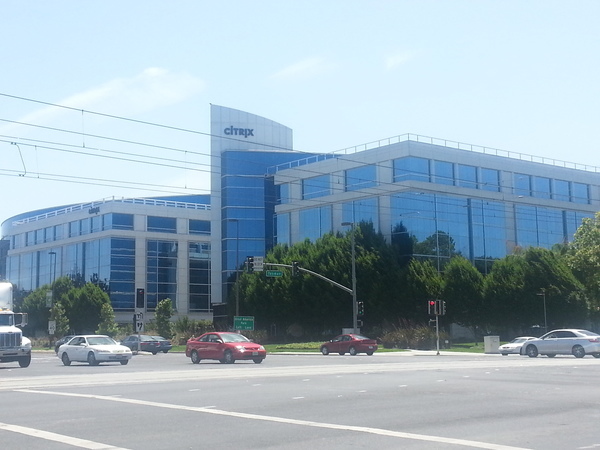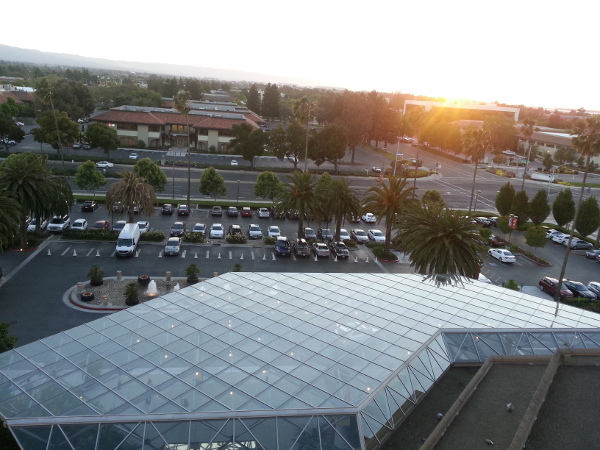Last week I went to the Augmented World Expo 2014 in Santa Clara, California. It was very interesting, full of new things, I was busy for three days straight, I saw all sorts of people and things, I tried on the best consumer-grade AR glasses available, and I had some small insights.

Christine Perey wrangles the AR Standards Community, a loose group of people interested in and working on open and interoperable augmented reality. On Wednesday 27 May, the day before AWE 2014 began, there was an workshop that had about 50 people at it. The agenda and speakers are listed on that page, and I hope the slides go up soon. Here are a few notes.
Aside: Everyone used PowerPoint slides! For the entire conference I think only one person, Amber Case, didn’t—she ran a web presentation locally off her laptop. It struck me as strange that at a high tech conference so many people were using PowerPoint. Why not use the web? Someone on Twitter said one reason is because the wifi at conferences is usually so bad you can’t rely on it at all, which is true, but everyone took their own laptop up and plugged it in and fiddled with those damned Mac video dongles for a few minutes, and if they’re doing that, they could run it locally like Case did. Personally, I recommend Org and org-reveal, as I describe here, but I won’t go on about Emacs.)
For a brief overview of the day, check out the first three minutes of this interview Christine did with Joseph Rampolla of Augmented Reality Dirt. He runs a podcast there and has interviewed a lot of interesting people (Christine included). Worth following.
It can be a bit dry,” she said. Maybe to some. Not to me!
AWE has done a fine job of getting videos of all of the talks up on YouTube, and if you want to see the afternoon, start with AWE2014 Open and Interoperable AR Workshop - Part 1 and go on.
Neil Trevett of the Khronos Group spoke about various standards that will be useful to AR. I’m not familiar with this area, but he mentioned StreamInput (“a cross-platform API to enable applications to discover and use new generation sensors to create sophisticated user interactions”), OpenVX (hardware acceleration for computer vision, as opposed to OpenCV, which is software and was described as fine for prototyping), glTF (“the runtime asset format for WebGL, OpenGL ES, and OpenGL”) and COLLADA (“an XML-based schema to make it easy to transport 3D assets between applications”). With all these as open standards inplemented by phone manufacturers, and with the data made available to the web browsers, then we have great building blocks for the augmented web.
Mary Lynne Nielsen of the IEEE ran through a variety of standards they in turn have that would be useful in AR. The IEEE’s page about AR has more.
Fridolin Wild described TELL-ME: Technology Enhanced Learning Livinglab for Manufacturing Environments. (I think they’re pushing it a bit with Livinglab. TELLL-ME would have worked.)

CARIF
Martin Lechner, CTO of Wikitude, spoke about AR browser interoperability. This was especially interesting to me. He ran through a few reasons why Wikitude, Layar and Metaio would collaborate to solve the problem that their three APIs were all different and anyone presenting geolocated points of interest in one would have to do it all over again twice to make the view work in the others:
- users don’t have all the AR browsers
- content providers choose AR authoring tools with maximum reach
- developers choose AR authoring tools to “fit” the project objectives
- interoperability increases reach
- interoperability increases speed to market
All good reasons from the point of view of vendors as they’re mulling over whether to collaborate with competitors … but to me the question never would have arisen. Of course they should all have some common way of describing points of interest! Open standards! That’s what ARML is for, but sadly ARML appears to be moribund.
However, right now there’s the Common AR Interchange Format (CARIF), which is described fully in A Proposal for AR Browser Interoperability (PDF). It’s based on a subset of ARML and just handles geolocated POIs. URLs with protocols ar:// and sar:// are configured to be recognized (only on Android?) and the browser of choice will open. I’m not fully clear on how all this works or how I, as a maker of a POI provider for an AR browser, could serve up CARIF myself instead of this mysterious translation going on behind the scenes. I will look into this.
Next, Blair Macintyre showed Argon, an “AR web app ecosystem” that will do a lot of nice things, though unfortunately only on iOS. See the talk he gave in New York in March for more, including a video. Looks like it will be nice (for iOS users). He’s planning on opening the source, but didn’t say when.
“I’m one of the web purists in the community.”
Next up was Rob Manson (@nambor) of BuildAR, who said, “I’m one of the web purist extremists in the community.” I gave him a thumbs up. Here’s his talk:
Rob’s working on awe.js, a tool to make the augmented web easy to use. Most of the pieces are available now, free and open, to make AR work in the browser: you can write a script that gets the browser’s location, gets the camera feed, shows the video on the page, and uses WebGL to add objects to it. awe.js bring all those pieces together, and the goal is to make it as easy to use as jQuery. There’s a lot more work to be done, both on awe.js and on getting support for certain things into browsers, but it’s very promising, and I encourage everyone to work on this. (My January post awe.js has more on it.) If you’re a web hacker interested in AR, hack on this!
awe.js is free software. The AR Standards group is working on open standards, which are crucial, but those standards need to be used by free and open source software. There was only one other mention of FOSS during the entire conference. I’ll come back to that later.

 Miskatonic University Press
Miskatonic University Press